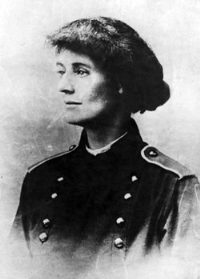On Saturday December 14th 1918, voters in Britain took part in the first General Election since December 1910 and the first since the Great War ended a little over a month before. What made this election stand out was not the result, for that was a foregone conclusion, but the vast increase in voter eligibility. Ten months earlier in February, with the War still raging in Europe and beyond, an Act of Parliament granted the vote to all men aged 21 and over regardless of their wealth, and all women over 30. This more than doubled the male electorate to just under 13 million and created an entirely new female franchise of 8.5 million voters, around two-thirds of the adult women in the UK. Strangely, the turnout for this contest was very low at 57.2%, well down from the 75% who voted in December 1910, and that was with a much smaller all-male electorate who could only vote under certain circumstances. It was the lowest turnout since 1868, and remained so until the General Election of 2001.

The most likely reason for this apparent lack of interest was that it was almost inconceivable that David Lloyd George – self-styled as ‘The Man Who Won The War’ – could lose. Turnouts for all elections are usually low when the sitting government has widespread popular support, and this was certainly the case in 1918. Lloyd George had assumed the premiership in December 1916 by displacing Herbert Asquith who, for a variety of reasons, had lost his grip as a war leader.

The circumstances of that change of role were murky to say the least, and it caused a permanent split in the British Liberal Party from which it never fully recovered. However, Lloyd George was in a remarkably unusual position after this election. He was prime minister for sure, but he had virtually no parliamentary power because his new party of ‘Coalition Liberals’ were dwarfed by the Conservatives in the House of Commons, 127 seats to 382. This was 28 seats more than was needed for a full majority, but the Conservatives declined the offer to form a government in their own right.

Their astute leader Andrew Bonar Law, who was then serving as Chancellor of the Exchequer, recognised that to turf Lloyd George out of office at the peak of his powers would almost certainly lead to electoral suicide at the next election due in 1923 at the latest. More to the point, Britain was now facing a series of challenges ranging from mass demobilisation, the looming Paris Peace Conference, considerable difficulties with Irish Home Rule and a severely wounded economy. It was more convenient to use Lloyd George as a shield when things went wrong, and to peep out over the parapet and claim a share of the glory when he got it right, which was not very often.

Another winner in the election was the fledgling Labour Party under William Adamson. Founded in Bradford in 1900 as the Labour Representation Committee, the Party had steadily increased its support and fully expected to romp home in 1918 now that all working men had the vote. However, their decision to adopt Clause IV into their constitution and manifesto in 1918, which in effect called for a step towards a communist economy, presented their opponents with an open goal. At this time Russia was in a full-scale civil war after the Bolshevik seizure of power in 1917, and Germany itself was riven by extremist battles on the streets almost nightly, so anti-socialist propaganda was easy to manufacture and deliver in the heady atmosphere of post-War Britain. Even so, the Party still increased its share to win 1 in every 5 votes cast, even winning three quarters of a million more votes than the prime minister’s own party, and 57 seats, up from 42 in the 1910 December Election. Another relatively new party, Sinn Féin in Ireland, won 73 seats, 47 of which were won by candidates thencurrently in jail. Beginning a tradition that continues to this day, none of the Sinn Féin representatives took up their seats in the House of Commons, though they did make history in another sense in that they provided the first ever woman to be elected to parliament in Britain, Constance Markievicz.

The British General Election of 100 years ago this month was therefore one of contrasts. There were some firsts which marked a change in the political direction of the nation, perhaps not obvious at the time, but both Labour and the women’s vote had taken great strides. But it was mainly an election dominated by ‘business as usual’, in effect an electoral coronation of Lloyd George as prime minister. Yet within four years his halo had slipped and he was unceremoniously ditched by his Conservative puppet masters, leaving Bonar Law in charge for a mere seven months until serious ill health forced his withdrawal from politics altogether. He died in October 1923. Neither would Lloyd George hold office again, and he retired to the obscure benches in parliament until his death in 1945 only a few days before the end of the Second World War. He retained much public affection throughout all of those wilderness years, and greatly enriched himself through his best-selling memoirs and speaking tours. However, it is tempting to wonder if during those long war years against Hitler’s Germany, he remembered the Coalition manifesto which he approved in 1918 which stated that “the [death] knell of military autocracy has sounded forever in Continental Europe.” How wrong they all were.
Useful sources
UK Election Statistics, 1918-2017: http://researchbriefings.files.parliament.uk/documents/CBP-7529/CBP-7529.pdf
The ‘Khaki’ Election of 1918: 1914-18 Online: https://encyclopedia.1914-1918-online.net/article/khaki_election_1918
History Matters (University of Sheffield): http://www.historymatters.group.shef.ac.uk/womens-participation-partial-suffrage/
The Conservative Party manifesto of 1918: http://www.conservativemanifesto.com/1918/1918-conservative-manifesto.shtml
